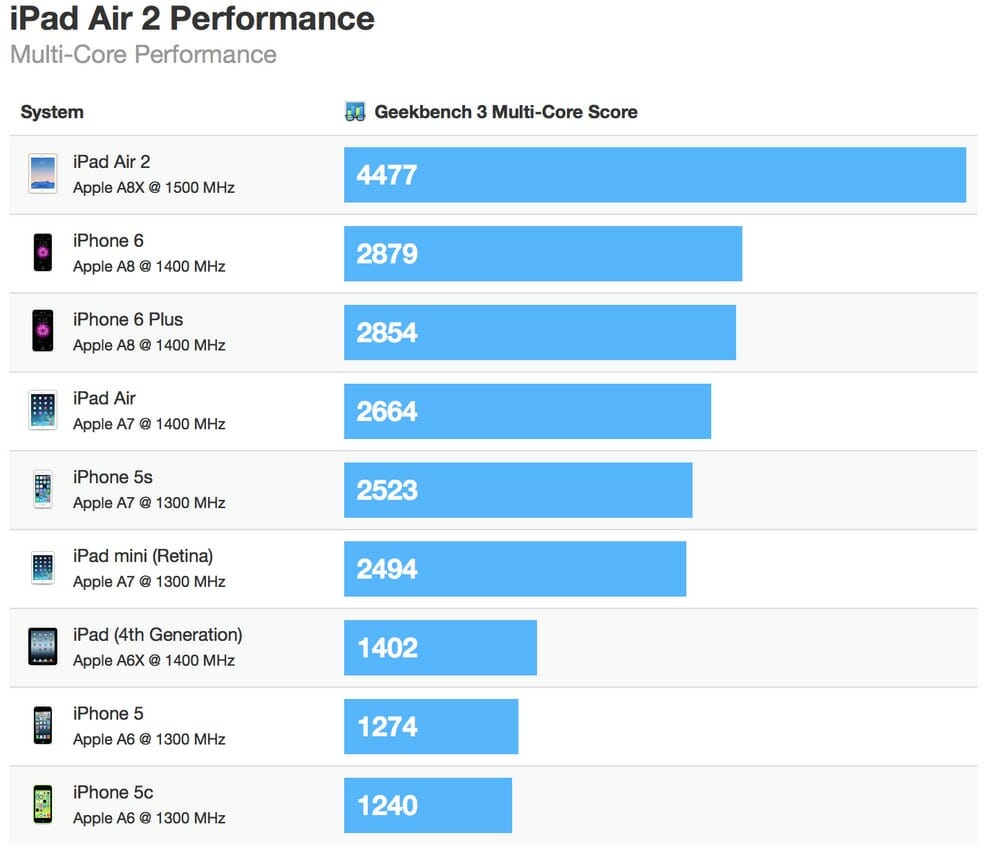When Apple announced a 40% increase in performance for the new iPad Air’s A8X chip over the previous generation (the A7 chip found in the iPhone 5s and iPads Air and Mini) during its 2014 October keynote, investors and journalists were skeptical of the accuracy of the claim. After all, the A8 CPUs found in the iPhone 6 and 6+ were only 20% faster than the A7s. However, recent benchmarks released online indicate that Apple had actually been modest about their new slate. The triple-core A8X (as opposed to dual-core), with its two gigabytes of memory (up from one), scored almost 70% higher than the iPad Air and 55% higher than the iPhone 6 on Geekbench. It’s scores also dwarfed that of the Nvidia Shield tablet, the most powerful Android tablet on the market. These phenomenal results demonstrate Apple’s enormous potential to crank the performance of its mobile devices to true modern desktop levels.
The bump up in the amount of RAM and number of cores for the iPad Air 2 signify a true threat to one of the key selling points of Android devices: raw computing power. For years, Android devices’ makers such as Samsung have touted the greater number of cores and performance of their products compared to iPhones and iPads. During that time, the highest-end Android smartphones and tablets were indeed faster at multi-core processing than Apple’s i-devices; however, those dual-core iPads and iPhones were still able to hold their own against the onslaught of quad-core devices. Now that Apple too has begun to up the cores, Samsung and the others are increasingly in danger of biting the dust.
Fortunately, with the arrival of the first 64-bit Android products such as the Nexus 9 tablet, consumers are guaranteed that the Android versus iOS war will persist and continue to churn out progressively better devices.
Written by Raymond Cao’17








